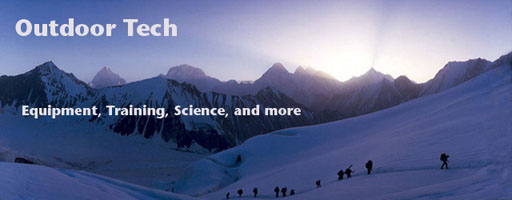 Last week, the French web site Pistehors.com posted an advisory that has been sent to owners of Ortovox F1 beacons. It warns that these older analog beacons can search just fine but there's a chance that newer digital beacons (nearly all that have been sold in the past 5 years) may not find them when buried by an avalanche. Since many skiers wear a beacon like it's a cloak of invincibility, this should be a scary thought…immobilized under four feet of snow, slowly losing consciousness, and realizing that your friends can't find you because you're wearing an old beacon.
Last week, the French web site Pistehors.com posted an advisory that has been sent to owners of Ortovox F1 beacons. It warns that these older analog beacons can search just fine but there's a chance that newer digital beacons (nearly all that have been sold in the past 5 years) may not find them when buried by an avalanche. Since many skiers wear a beacon like it's a cloak of invincibility, this should be a scary thought…immobilized under four feet of snow, slowly losing consciousness, and realizing that your friends can't find you because you're wearing an old beacon.
While this Ortovox alert may sound alarming, in truth it's old news and it applies to all older beacons. There are two major issues: signal drift and beacon fragility. And few skiers are aware of either problem.
Although all beacons sold in the past two decades broadcast and receive on the 457 kHz frequency, the newer beacons are much more intolerant of any variation. The ETSI standard requires all beacons to search in this range +/- 80 Hz. Unfortunately, with time and lots of small bumps, some beacons can end up broadcasting outside of this margin of error. The older analog beacons can still receive such errant signals. But many of the newer digital ones cannot.
The Pieps DSP has a unique feature that can measure the signal from other beacons and tells you how close they are to the ideal. But this test must be performed in advance--it does you no good at the trailhead. If your beacon is over or under by 50Hz, it must be sent in for repair. And for most older analog beacons, such as the F1, spare parts are no longer available. Hence the Ortovox advisory.
These analog beacons are not obsolete. In the hands of an experienced searcher, they can be just as fast as any of the fancy new digital beacons. But if you don't test them for drift, they can be a safety placebo.
And herein lies the second major problem with avalanche beacons: they are far more fragile than most people realize. The ETSI standard (ETS 300-718) only requires that a sample beacon operate properly after 6 drops from a height of 3 feet onto a wooden floor. For a piece of lifesaving equipment, that is a very low durability requirement. Skiers likely do not realize how easy it is to damage their beacons. It is quite possible to damage them internally so that they can pass a beacon check at the trailhead (you do one every time, right?!) but malfunction when the shit hits the fan.
That Ortovox France felt it necessary to send owners of their F1 beacons an advisory brings up a overarching problem with avalanche beacons. The outdoor industry as a whole is doing a poor job of educating consumers on what beacons can and cannot do. On his WildSnow blog, Lou Dawson recently discussed 3 myths of avalanche survival: beacons ensure rescue, being buried by an avalanche is no big deal, and you'll be fine once uncovered.
Consumers are sold these $200 to $500 electronic miracle boxes without the knowledge to use them safely. Sure the CDs that come with most beacons now cover the basics adequately but they certainly don't discuss any of the above. Magazines just focus on the glitz without talking about real issues that their advertisers would prefer left unsaid. Movies show gonzo skiers and boarders on gnarly terrain but never, ever the consequences. Store employees seldom get cliniced on more than how to get the box to the cash register, along with add-on sales of a shovel, probe pole, and perhaps an AvaLung.
Even avalanche education courses have focused more on what to do after you've screwed up than how to avoid the problem in the first place. A recent study showed that sidecountry skiers are entirely unprepared for what lays outside of ski area gates. And this same group is now targeted with price point beacons so they can have the illusion of being safer.
With this season shaping up to be the worst in North American history for avalanche fatalities, perhaps the outdoor industry will re-prioritize how to educate consumers about backcountry safety. But that could affect too many bottom lines so I'm not holding my breath.

3 comments:
Great Story and very true !
Well said. Both my girlfriend and I ride with Ortovox F1s. I was aware of the potential for drift as beacons age, and therefor we check each others beacons before we head out. I was skiing with a friend who uses a Pieps DSP transceiver and just as we ducked under the resort boundry this morning we did a quick test. He couldn't find me from 5 feet away. Fresh batteries and try again? Still no.
To follow up. I just talked to Ortovox Canada. My F1 was manufactured in 1999 -- considering that, I'm way overdue for a new one. They'll either refurb this one for $150 or give me $50 credit towards a new one. I think that's pretty reasonable.
Post a Comment